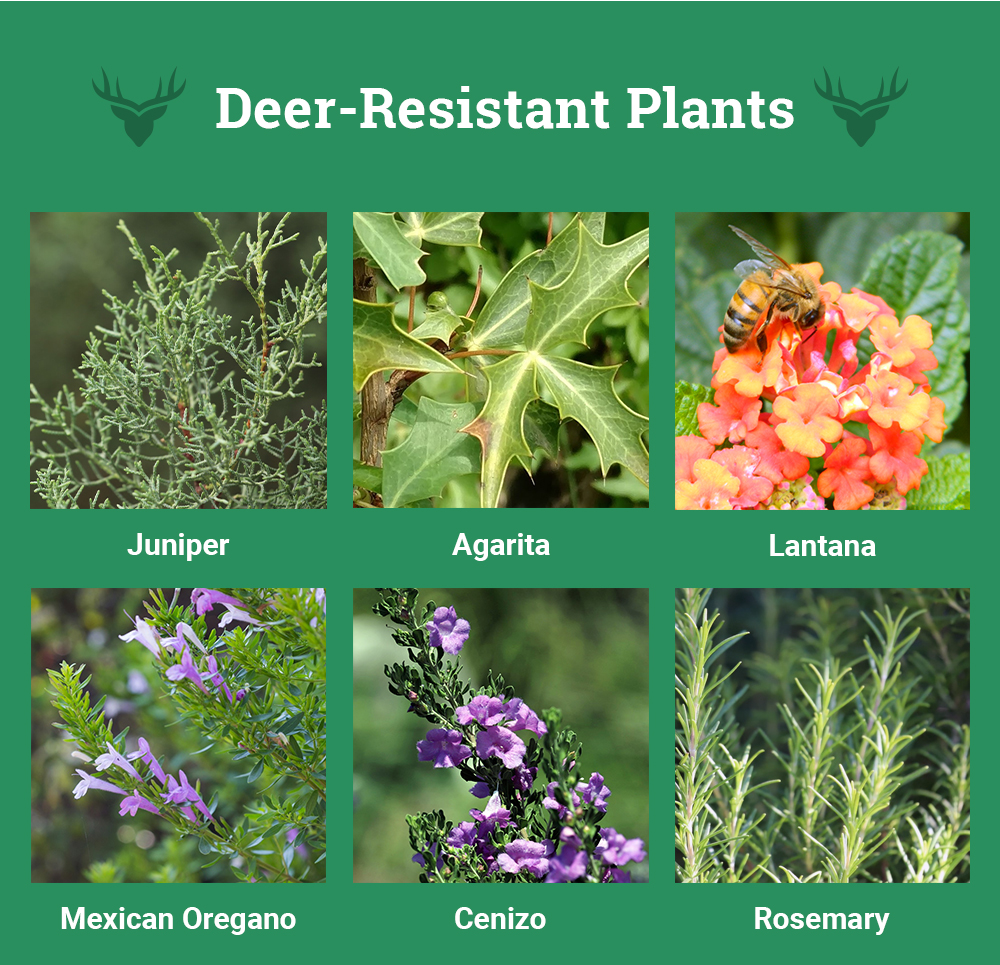So-called deer-resistant plants often aren’t. But here’s how to keep your landscape from becoming the new trendy eatery for dinner-seeking does, bucks and fawns.
To a famished whitetail, a perfectly manicured yard is a tantalizingly tasty menu. Once deer have established a comfort level and grazing routine around your lawn, they’ll make repeat visits for the foreseeable future.
Deer are creatures of habit, but these tips can help alter their routine.
Cage them
Keep new plants in protective cages. Any new planting will need a temporary cage or fencing for protection until its roots are strong enough to keep tugging teeth from yanking it out.
Create roadblocks
Dense, spiny plantings can make effective barriers (if wide enough) around established trees and shrubs. Agaves and primrose jasmine are particularly effective and attractive too!
Toughen up your landscape
Aim for the thorniest, oiliest, fuzziest and smelliest plants! Not surprisingly, these are the most familiar and successful landscape plants for the Hill Country — juniper, agarita, lantana, damianita, salvia, Mexican mint marigold, butterfly weed, Mexican oregano, sumac, esperanza, cenizo, herbs, purple heart and rosemary.

Remember, a hungry deer will nibble on anything. But these tips will help keep your landscape from becoming the new trendy eatery for local deer.


